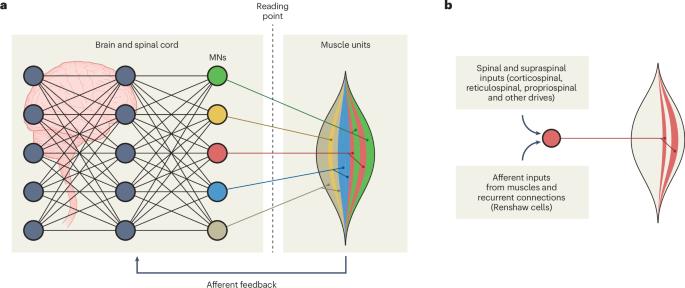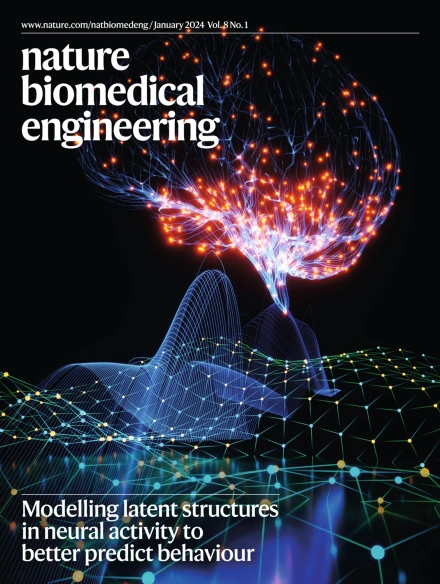Peripheral neural interfaces for reading high-frequency brain signals
IF 26.8
1区 医学
Q1 ENGINEERING, BIOMEDICAL
引用次数: 0
Abstract
Accurate and robust recording and decoding from the central nervous system (CNS) is essential for advances in human–machine interfacing. Technologies for direct measurements of CNS activity are limited by their resolution, sensitivity to interference and invasiveness. Motor neurons (MNs) represent the motor output layer of the CNS, receiving and sampling signals from different regions in the nervous system and generating the neural commands that control muscles. Muscle recordings and deep learning decode the spiking activity of spinal MNs in real time and with high accuracy. The input signals to MNs can be estimated from MN outputs. Here we argue that peripheral neural interfaces using muscle sensors represent a promising, non-invasive approach to estimate some of the neural activity from the CNS that reaches the MNs but does not directly modulate force production. We discuss the evidence supporting this concept and the advances needed to consolidate and test MN-based CNS interfaces in controlled and real-world settings. This Perspective argues that neural activity from the central nervous system that is not directly correlated to force production can be sensed via peripheral neural interfaces.

读取高频脑信号的外周神经接口
来自中枢神经系统(CNS)的准确和稳健的记录和解码对于人机接口的进步至关重要。直接测量中枢神经系统活动的技术受其分辨率、对干扰的敏感性和侵入性的限制。运动神经元(MNs)代表中枢神经系统的运动输出层,接收和采样来自神经系统不同区域的信号,并产生控制肌肉的神经命令。肌肉记录和深度学习可以实时、高精度地解码脊髓MNs的尖峰活动。MN的输入信号可以从MN的输出中估计出来。在这里,我们认为使用肌肉传感器的外周神经接口代表了一种很有前途的、非侵入性的方法,可以估计来自中枢神经系统的一些神经活动,这些活动到达神经网络,但不直接调节力的产生。我们讨论了支持这一概念的证据,以及在受控和现实环境中巩固和测试基于神经网络的中枢神经系统接口所需的进展。
本文章由计算机程序翻译,如有差异,请以英文原文为准。
求助全文
约1分钟内获得全文
求助全文
来源期刊

Nature Biomedical Engineering
Medicine-Medicine (miscellaneous)
CiteScore
45.30
自引率
1.10%
发文量
138
期刊介绍:
Nature Biomedical Engineering is an online-only monthly journal that was launched in January 2017. It aims to publish original research, reviews, and commentary focusing on applied biomedicine and health technology. The journal targets a diverse audience, including life scientists who are involved in developing experimental or computational systems and methods to enhance our understanding of human physiology. It also covers biomedical researchers and engineers who are engaged in designing or optimizing therapies, assays, devices, or procedures for diagnosing or treating diseases. Additionally, clinicians, who make use of research outputs to evaluate patient health or administer therapy in various clinical settings and healthcare contexts, are also part of the target audience.
 求助内容:
求助内容: 应助结果提醒方式:
应助结果提醒方式:


